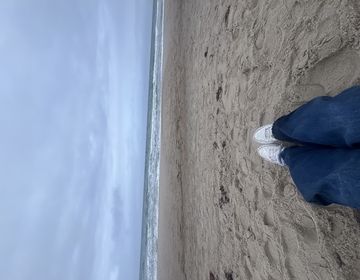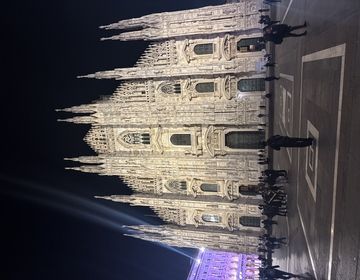Sustainability and Berlin’s Abandoned Airfields: A New Life for Tempelhof
By: Lillian Boudreau
Studying abroad in Berlin offers students an opportunity to experience how cities can creatively repurpose their history to build a more sustainable future. One of these such examples in Tempelhofer Feld, a former airfield that has been converted into a massive public park and a hub for urban sustainability.
Tempelhof Airport was originally built in the 1920s and was expanded during the nazi regime, making it a notable site during the Cold War. When the airport closed in 2008, debates arose about its future. Community members combatted urban development pressures, leaving the field as a public open space and breeding ground for native species. Today, Tempelhofer Feld stands as a testament to Berlin’s commitment to sustainability and community-oriented urban planning.
Stretching over 300 hectares, the park is one of the largest urban open spaces in the world. For students studying sustainability, Tempelhofer Feld serves as a living case study of how abandoned infrastructure can be adapted for ecological and social benefit. The former runways now accommodate cyclists, skaters, and runners, while the sprawling grass fields provide space for picnics, community gardens, and even urban beekeeping initiatives.
One of the park’s standout sustainability projects is the Allmende-Kontor, a large community garden located on the airfield. Locals and volunteers cultivate organic vegetables, herbs, and flowers, fostering biodiversity and promoting sustainable agriculture practices. During class excursions, I had the opportunity to explore the garden and get a hands-on experience with the area.
Tempelhofer Feld also hosts workshops and events focused on renewable energy, waste reduction, and climate activism. Solar panels, composting stations, and ecological art installations scattered throughout the park encourage visitors to think critically about sustainability in everyday life.
It’s not just a park, it’s a place where Berliners actively engage with ideas about community, green living, and preserving public resources. For students, the park represents the intersection of sustainability and social equity, showing how cities can prioritize environmental goals while honoring the needs of their residents.
Related Posts
Embracing Independence on a Solo Trip to Rostock
By: Brooke Menzock One thing I’ve loved while being abroad is the independence and the freedom to go anywhere I want, whenever I want. As a very independent and adventurous... keep reading
Your Guide to CIEE's Enhanced Open Campus Block and Semester In Programs
Studying abroad should be as flexible and unique as you are – while also equipping you with the knowledge and skills you need to address the world’s most pressing challenges... keep reading
3 Cities in 5 Days? Challenge Accepted!
By: Madeline Passarello Throughout my time studying abroad I had so many amazing experiences. Studying in Berlin gave me the ability to travel to 15 different cities over the course... keep reading



